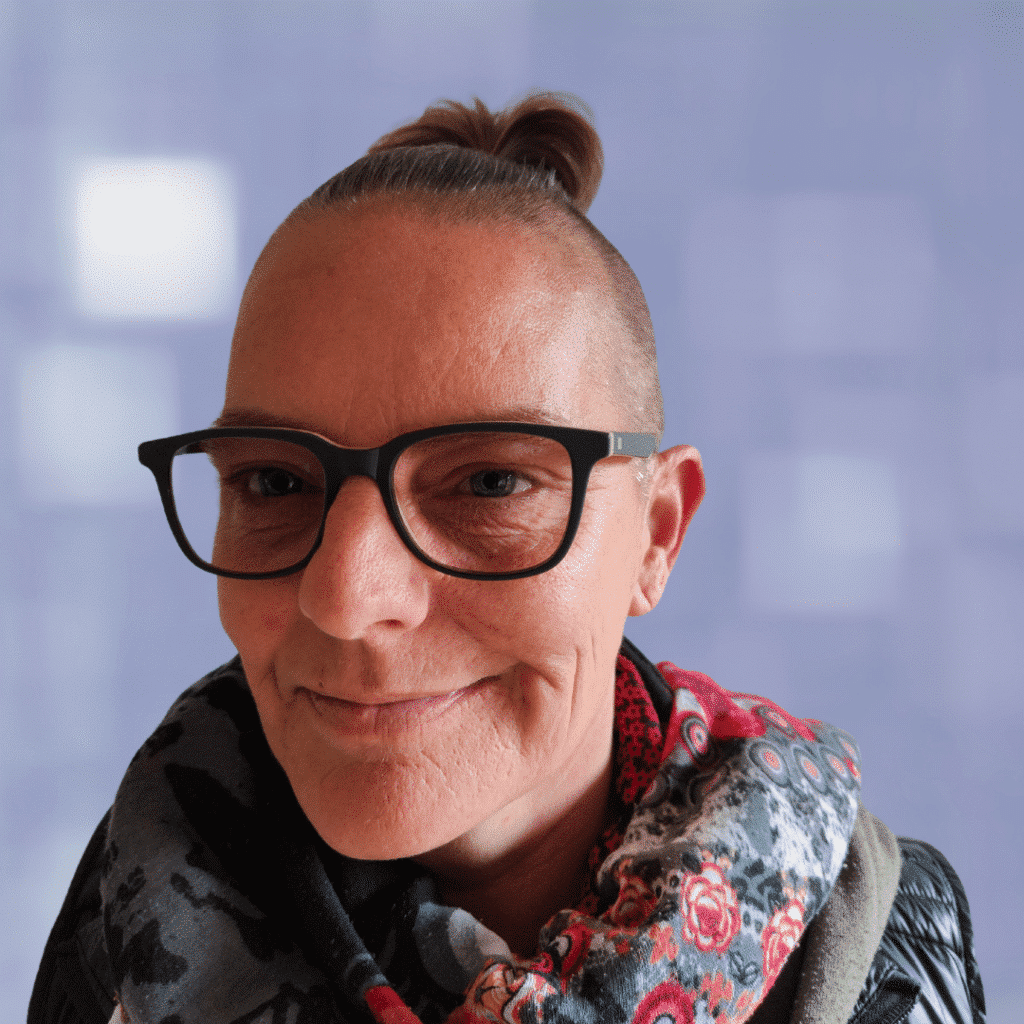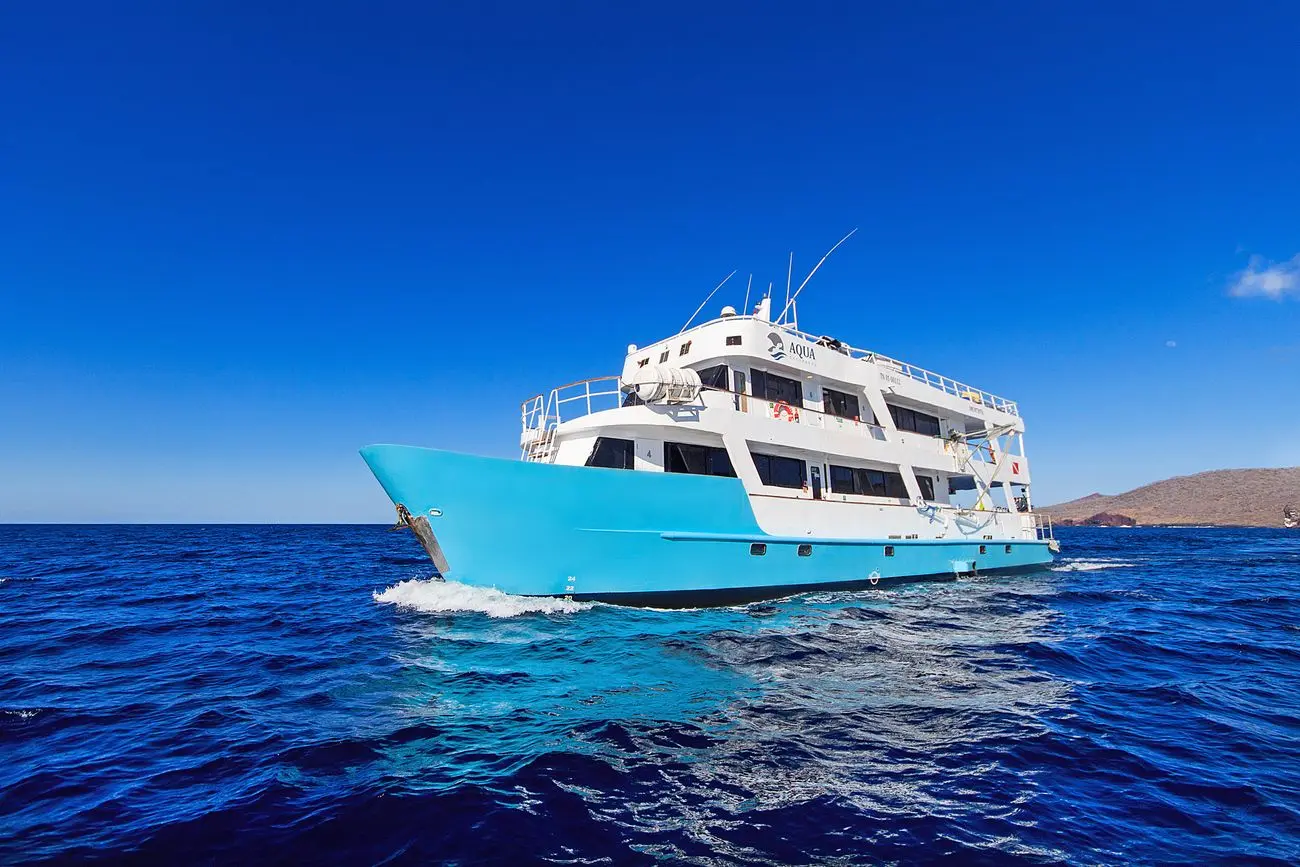Solmar V Liveaboard – Socorro, shark paradise.
Travel period
Features
Starting at
Diving on Socorro
Socorro Island in Mexico is one of the most famous dive sites in the world! It has been compared to Cocos Island in Costa-Rica and the Galapagos Islands in Ecuador. This comparison is not at all crazy because all 3 dive sites are located in the Pacific Ocean and offer similar living climates. Manta rays, 7 species of sharks, tuna, dolphins and whales feel at home there. Orcas and black killer whales are even occasionally spotted. Really special!
Good to know; usually we talk about a diving trip to Socorro. This is true, but Socorro is only one of the three islands where you dive. You are actually diving on the islands of the Revillagigedo. A mouthful, which is why it is often called Socorro. The Revillagigedo Archipelago consists of a total of four islands. Around three of these is dived; San Benedicto – often the island where you arrive first. Here you spot manta rays, dolphins, hammerhead sharks and with luck a tiger shark, Socorro – the location of the naval base. Whale sharks and/or humpback whales (in the right season), schools of sharks and manta rays. Roca Partida – a small rock with fat tuna, large schools of fish, countless sharks and plenty of action.
Best Travel Time Socorro: There is diving on Socorro between November and May. November through January is when the water is warmest and whale sharks are often spotted. From January/February, the whale sharks are exchanged for humpback whales, which you can spot both from the boat and underwater with, of course, a little luck. The water will be a bit colder!
Average Temperatures
Wetsuit advice for Socorro, Mexico
![]() Between November and January, a 5mm is sufficient, the other months a 7mm is recommended.
Between November and January, a 5mm is sufficient, the other months a 7mm is recommended.
What will you experience on this trip?
View itinerary here
Day 1 - Travel to Mexico - Cabo San Lucas
Today begins the journey toward Mexico. The Solmar boat leaves from the port in Cabo San Lucas. That is where we are traveling today. The nearest airport is San Jose del Cabo. There are several flight options. For example, you can fly there via Toronto, Houston or Mexico with just one stopover.
To be on the safe side, we always recommend being in Cabo San Lucas at least one day before the boat leaves. Then should there be something of a flight delay there is no panic to catch the boat. In addition, the coastal town of Cabo San Lucas is also hearty. By mutual agreement, we book a hotel that is nice and central. The first evening you can go into town, there are as many as 50 restaurants as well as bars around the harbor and on the main street. The atmosphere is convivial. Really a great place to stay the first night.
Day 2 - On board and 25 hours of sailing
The boat leaves today in the early afternoon. That means you can start the day peacefully. Enjoy a Mexican breakfast, start buying some nice souvenirs on the main street or relax on the beach for another hour. Around the end of the morning, check out of the hotel and grab a cab or an uber to the port. From most locations, an Uber costs about $5, so it’s quite manageable. Your destination? Marina del Rey. After all, that’s where the Solmar V is waiting for you.
Once on board in it’s time to settle in the cabins, take care of the administration with the dive guide (certification, nitrox, chamber fee etc.) and then the boat will soon leave…. because it’s about 25 hours of sailing! In fact, the islands where you will be diving are 600km off the coast and that is really quite a bit of sailing. Fortunately, there is plenty of entertainment on board, included margheritas and a lovely lounge deck. Hopefully the sea will be calm, which will make the crossing extra pleasant. Good to know; if you get seasick easily, we recommend bringing medication. One crossing is not the other. It’s super calm sometimes…. but it can also be rougher. We never know in advance, so be prepared!
Day 3 - Arrival at San Benedicto
Today we arrive at the first island of the Revillagigedo; San Benedicto. Here we will make one dive today, unless we arrive really late due to wind/current opposition. But usually one dive is doable. The waters around the islands belong to one large protected Marine Park, the rule is that no diving is allowed after 5 p.m. San Benedicto is a small island belonging to Socorro. It has 2 peaks, one of which is a volcanic crater created after an eruption in 1953.
The first dive is actually always at Las Cuevas. An easy dive site where you can make your first check out dive nicely. Here you will see rays, white tip sharks, manta rays and schools of fish, among others. This is not really a shark location although we do not rule out a silky shark, hammerhead or Galapagos shark. A nice easy dive to make sure you have the right amount of lead with you as well as to check if all your dive gear is functioning properly.
* The description of this trip is based on how Solmar prefers to run the trip. Weather conditions and multiple boats at one dive site are factors that can affect the route. The Solmar aims to do a minimum of 16 dives, but ideally 20 dives per trip. During our group trip in November 2022, thanks to the captain’s good planning, we managed to get the maximum out of it; 20 dives.
Day 4 - El Cañon, San Benedicto
For many, El Cañon is one of the most favorite dive sites on this dive vacation. In fact, here you will find schools of hammerhead sharks, Galapagos sharks, tiger sharks (with a little luck), whale sharks and lots of fish. Mantas can also pass regularly. It’s just really busy around here. We make as many as 4 dives here today. The area where you dive is huge and there is so much to see, even with 12 dives you would not get bored here.
During the last group trip we organized in Nov’22, they saw large schools of hammerhead sharks every dive here. The “shark” light for Rianne, who was along for the ride, was the moment she was filming a school of hammerhead sharks and suddenly a fat tiger shark swam right through the middle of her frame. Wow. We have the images!
After dinner, the boat leaves for the next island; Socorro.
Day 5 - Socorro
We arrived at Socorro Island. As you will see, Socorro Island is the largest island in the archipelago. No fishing has been allowed since 2002. Manta Rays here have a very special, curious bond with divers. They swim with divers. In addition to the friendly giant manta rays, this is also where large schools of hammerhead sharks swim by and all the other big stuff we’ve been able to dive with several times this diving trip. We will make 3 dives today. The reason we are not doing 4 dives is because when we arrive at Socorro we have to report to the naval base there. Sometimes the captain can “clear” us via radio, but sometimes they decide to come aboard as well. You never know that in advance.
In the evening the boat leaves for Roca Partida, the sailing time is approx. 6 to 7 hours.
Day 6 & 7 - Roca Partida and ......
Roca Partida is a small cliff about 40 meters high and 100 meters long that protrudes above the water as an island. It is the smallest island of the Socorro Islands Archipelago and in one dive you can go around it. The island is a real big fish magnet. Whale sharks, dolphins and whales migrate past it annually. Hammerheads, silky sharks and gray sharks are also frequent guests again. On our last trip, there was also a giant yellowfin tuna swimming around the rock. Very impressive!
Around Roca Partida we make 4 dives again on day 6.
On Day 7 we will see what is convenient, either enjoy another day around Roca Partida or return to San Benedicto. One more day at El Cañon is a wish for many as many sharks were spotted on Day 4…. But Roca Partida is also really a party with lots of marine life.
Day 8 - El Boiler, San Bendicto
Today is already the last day of diving. We conclude the diving vacation with four dives on “El Boiler,” a large peak that extends from the depths to a few meters from the surface. It is small enough to swim around several times in one dive and large enough to be a favorite gathering point, attracting marine life from miles around. El Boiler is known as the home of the world-famous Giant Pacific Manta, this dive site is perfect for close-up and personal encounters with the Giant manta rays can grow to a wingspan of over six meters, but they are friendly creatures. Dolphins are also often spotted here in the morning.
After the final dive, the boat begins the journey back to Cabo San Lucas.
Day 9, 10 & 11 - Return to Cabo San Lucas
After some 25 hours of sailing, you will arrive in Cabo San Lucas in the early evening. In the bay the boat will anchor and this evening you will stay on the boat. The last evening is devoted to a delicious meal, exchanging contact details with new buddies and packing suitcases.
The next morning, after breakfast, it is time to leave around 08:00. By transfer you will be taken to the air port of San Jose del Cabo. In most cases, your flight lands back in Europe a day later (day 11).
An extension is also very possible around Cabo San Lucas / La Paz. Spend a few more days diving in the Sea of Cortez with sea lions, among other things, or relax with a cocktail by the pool. Anything is possible!
The liveaboard
Staying on the boat
Solmar V
The Solmar V Liveaboard is a former fishing boat about 35m long that has been completely converted into a liveaboard. The traditional strong steel hull with wooden interiors make the Solmar V a true classic. The boat has a total of 12 cabins, including 10 for two people and two single cabins. A total of 22 divers can participate. The cabins are not large, but the beds are very comfortable. Fine for sleeping, then. All cabins have a toilet/shower cabin. Showers are also available on the dive deck. Also, all cabins are equipped with individual air conditioning. The food on the boat is excellent,! Tony, the cook, is a true chef. A delicious hot breakfast in the morning, a combination of hot and cold in the afternoon and a 3-course meal in the evening. You won’t lack anything. The margeritas Maurico serves – well after diving, of course – are also well worth it!
Good to know; since early 2023, diving with Nitrox is mandatory. Nitrox is included in the price. If you are not yet nitrox certified you can arrange this (for a fee) locally (during the boat trip to the islands) or take a nitrox course at your local dive association.
Travel costs
What is included
This travel package is €4589 per person. The trip can be extended as desired. A number of things are included by default in this travel package.
Prices are subject to price changes, increases or changing exchange rates. The flight price indication is always based on the cheapest possible booking class.
Want to know more about the possibilities? Get in touch with us!
Included in this trip, from €4589 p.p.
- 8 nights in a (shared) standard stateroom
- Accommodation on a full board basis, including alcoholic beverages at dinner and margaritas in the evening.
- Approx. 18 dives, use of Nitrox mandatory
- Marine Park Fee a $87.- p.d.
- VZR, Calamity Fund & Administration fee
Excluding
- Flights to San Jose del Cabo
- Transfers to/from Airport
- Hotel in Cabo San Lucas 1st night
- Dive insurance (mandatory)
- from €650,- p.p.
- approx. $20/$35.00 o.w.
- in consultation
Optional
- Upgrade: Single Stateroom
- Upgrade: Superior Stateroom
- + $400.00 p.p.
- + $200.00 p.p.
Send this trip by email
Want to save or share the details of this trip with someone? You can do so by sending the trip by email.
Where may we send the email to?
Frequently asked questions about this diving vacation
Liveaboard
In most cases, the boat leaves the port of Cabo San Lucas around noon (12:00).
The Solmar V is waiting for you at Marina Del Rey in Cabo San Lucas. This is also where you leave the boat on your return.
In the morning, you can leave the boat with daylight between 06:00 and 09:00. We recommend that everyone be at the airport 3 hours before flight departure. Since a transfer to the airport takes about 45 minutes, the earliest you can fly is around 10:00, a little later is always better.
Menus offer a combination of American and Mexican dishes, using fresh, local ingredients whenever possible. Before the first dive, there is a small buffet breakfast consisting of yogurt, cereal, toast and fruit. The first dive is followed by the hot breakfast. Eggs, pancakes and more are served daily. Solmar serves a three-course lunch, starting with often a fresh, homemade soup, followed by a main course and a delicious dessert. Dinner is equally varied, expect 3-courses of pasta, bbq, steak, burgers, fries, rice and, of course, Mexican dishes. All drinks, including beer and wine with meals, are included.
Special requests such as food allergies, a vegetarian menu or extra salads can be accommodated if at least two weeks’ notice is given.
On live-aboard diving trips, it is important to pack light because of limited cabin space. Swimwear, shorts and t-shirts are the usual attire, and it is mandatory to wear dry clothes during meals, which take place in the main lounge. Temperatures on Socorro range from 21-27°C, but evenings can be cooler, so bringing workout pants, sweatshirts or sweaters is a good idea. Don’t forget to bring a hat, sunglasses and plenty of sunscreen.
Sockets typically have two flat pins, as in the United States and Canada. This type of outlet is also referred to as Type A. The voltage is 110V. There are also some 220V charging stations on board.
Diving
Dive insurance is required for all trips to the Socorro Islands and you will be asked to show proof of insurance prior to the trip.
Dive insurance (or travel insurance) should cover at a minimum:
- Treatment in the hyperbaric chamber
- Air Evacuation
It is important that this is clearly defined in the insurance policy.
Yes, diving with Nitrox has been mandatory since early 2023. Nitrox is included in the price. If you are not yet nitrox certified you can arrange this (for a fee) locally (during the boat trip to the islands) or take a nitrox course at your local dive association.
No, night diving is prohibited throughout the Revillagigedo (Socorro) marine park.
The Solmar V provides you with air, lead and a weight belt. All other diving equipment must be provided by yourself or rented in advance. A dive computer is mandatory.
Equipment needed: Respirator (DIN or INT), buoyancy vest, dive fins and shoes, dive mask, dive computer, dive suit.
Ocean temperatures at Socorro typically range from 25.5°C-27.8°C in November, 21.1°C-23.3°C in February/March, and 24.4°C-26.7°C in April to June. A 5mm wetsuit is recommended for the warmer months, while a 5/7mm or 7mm wetsuit is recommended for the colder months. Some guests also pack a light vest and hood or a vest with an attached hood in case there are thermoclines during the colder months.
Related diving trips
Aqua Liveaboard – Diving in Darwin’s Paradise
Like Charles Darwin, discover the extraordinary nature of the Galapagos Islands. Underwater see hammerhead sharks…….
We are EWDR








